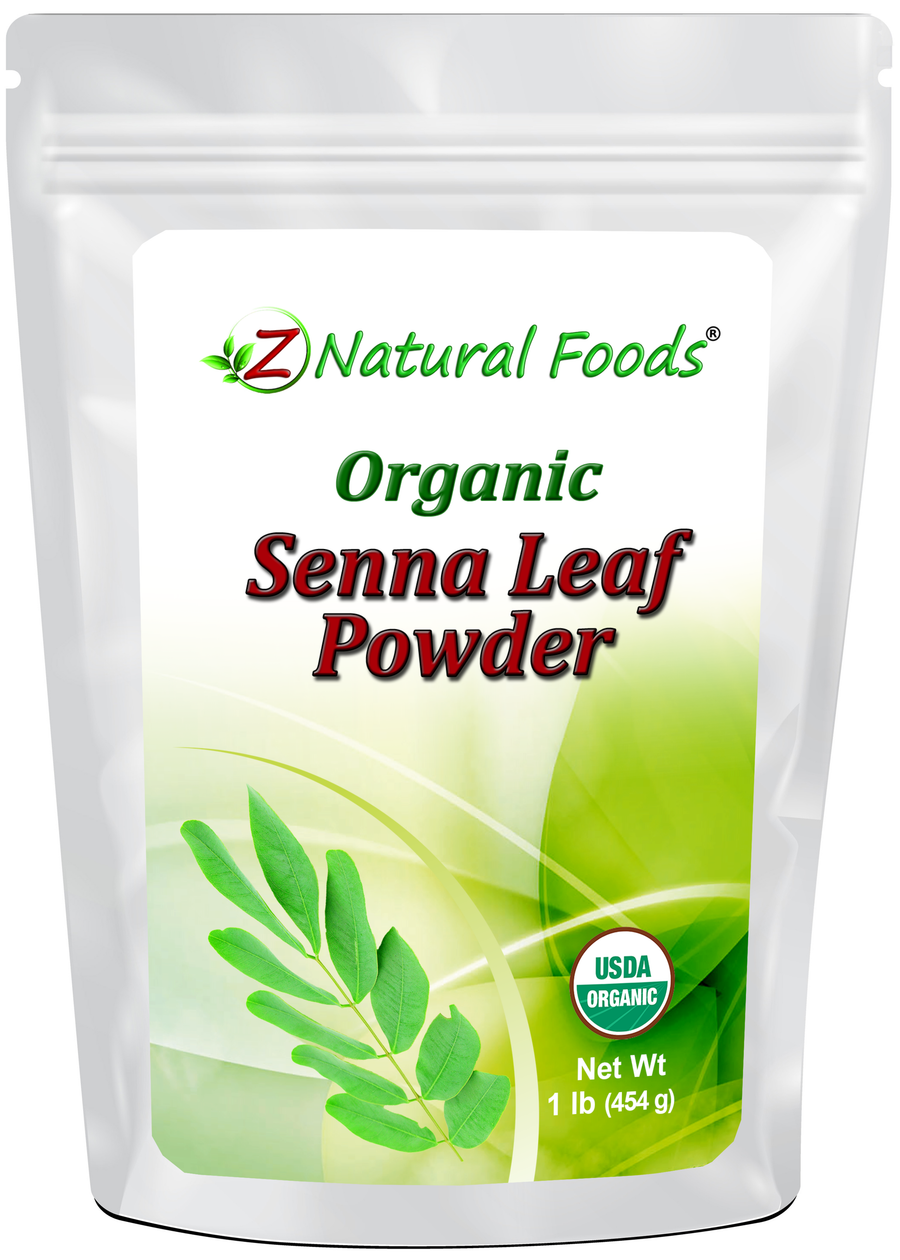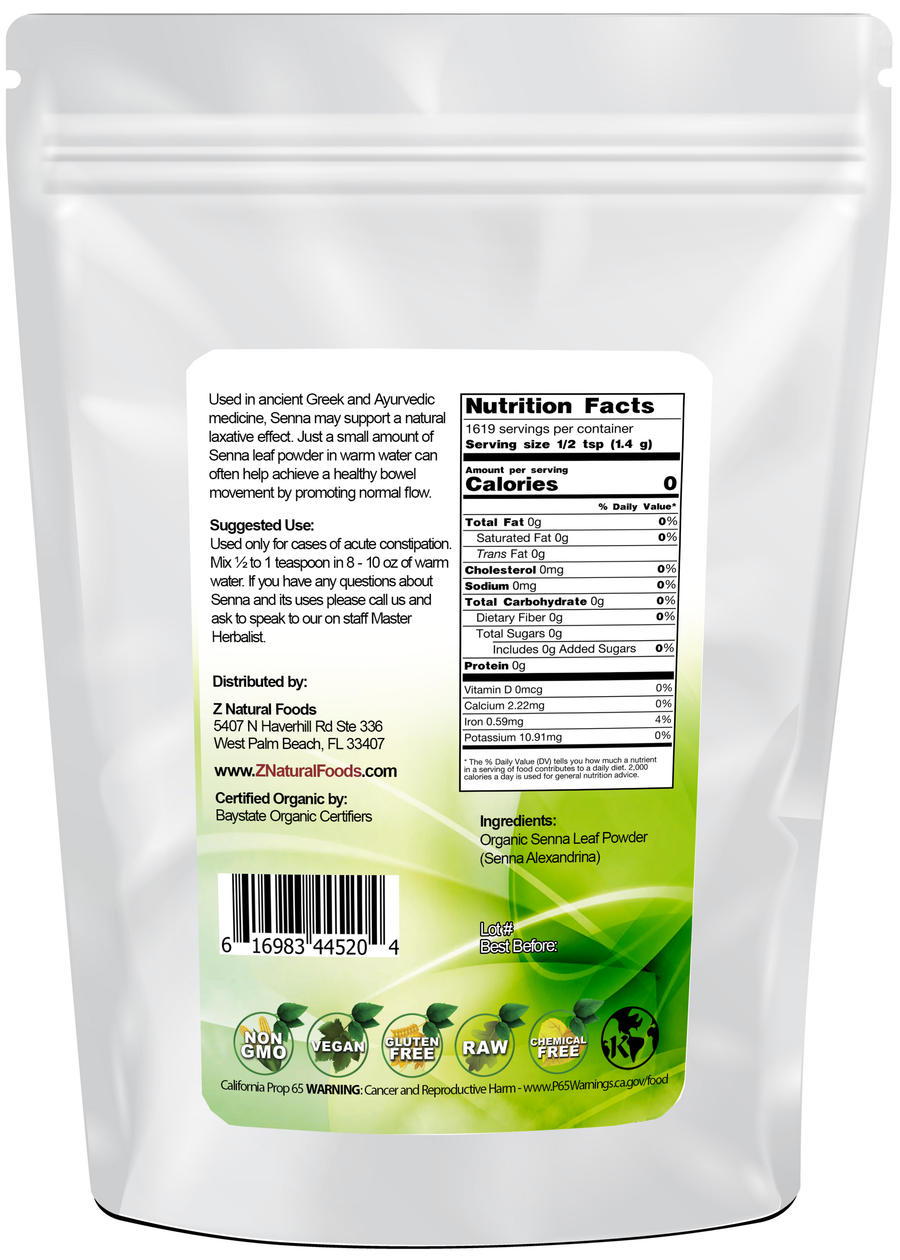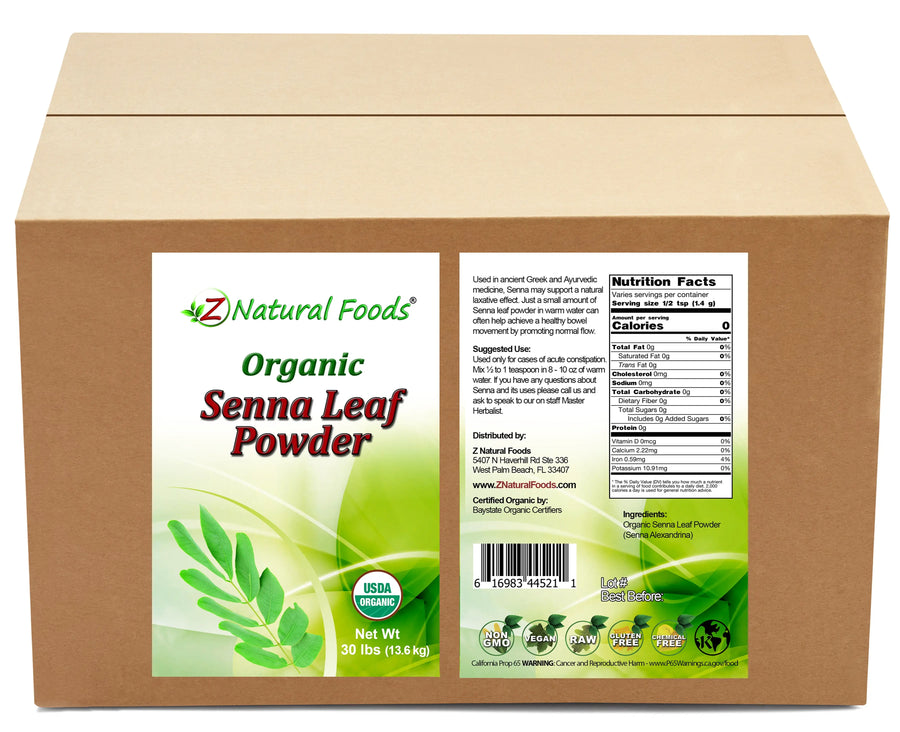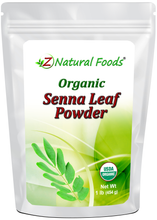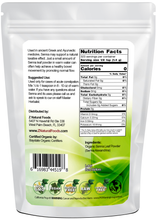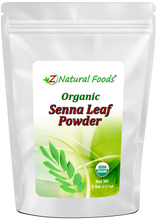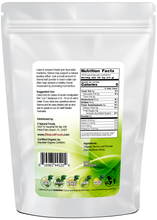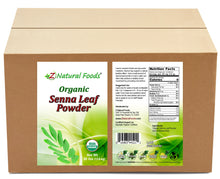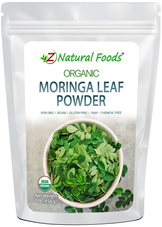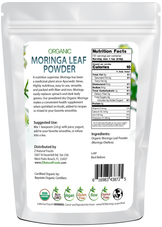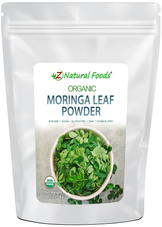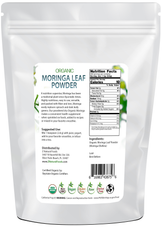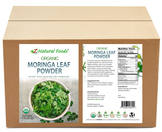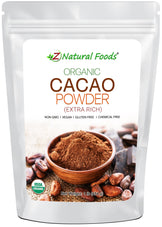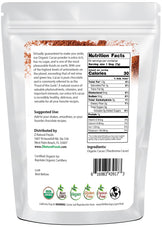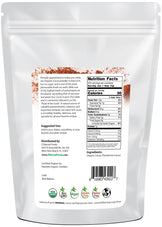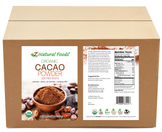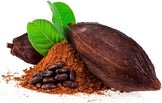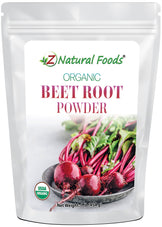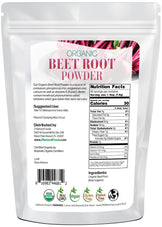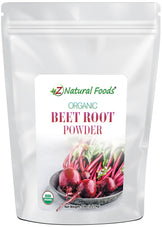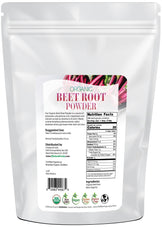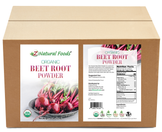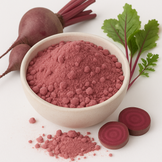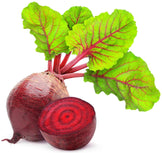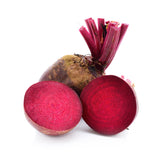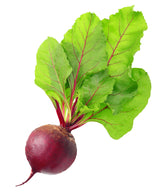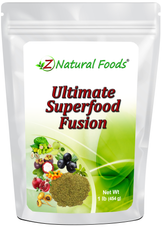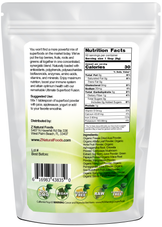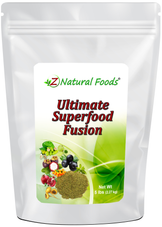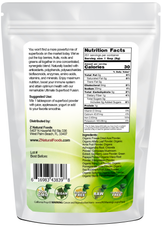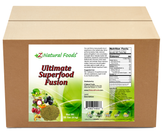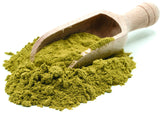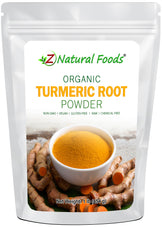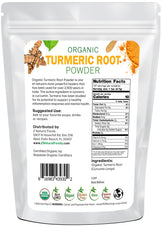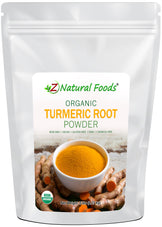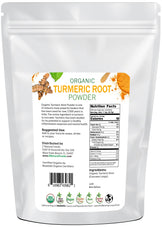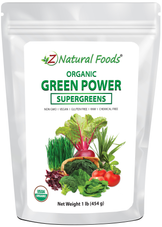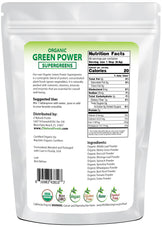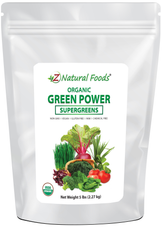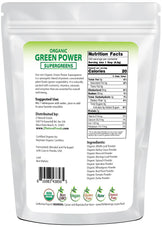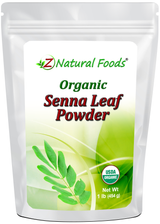About Product
Senna Leaf Powder is made from the dried leaves of the Cassia senna plant, native to tropical regions of Africa and the Middle East. Finely ground for convenience, it has a mild, earthy flavor and is commonly blended into teas and herbal infusions.
Shelf-stable and easy to use, senna leaf powder can also be combined with other herbs and spices in traditional blends. With its long history of use across many cultures, it remains a versatile ingredient in herbal preparations today.
Micronutrients of Senna Leaf include:
-
Glycosides: (sennosides A, B, C, D)
-
Other Phytochemicals: Rhein, chrysophanol, aloe-emodin, kaempferol, myricyl alcohol, salicvlic acid, palmitic acid, stearic acid, isorhamnetin, barbaloin, cathartic acid, anthraquinone derivatives
Suggested Use: Used only for cases of acute constipation. Mix ½ to 1 teaspoon in 8-10 oz of warm water.
Mixing Suggestions:
-
May be combined with ginger and clove to relieve mild constipation possibly.
-
Senna can also be combined as a tea with ginger and fennel to prevent intense gripping.
Important Warnings:
-
Senna can worsen constipation if misused, and if used too often, your bowel movements can become dependent on the stimulating effect.
-
Senna should only be used alone for acute constipation and only until the problem is resolved. Do not take this herb during pregnancy.
-
Senna may cause loss of fluids, abdominal pain, and cramping, and prolonged use may affect electrolytes.
-
To further support bowel health, it may be helpful to use this herb with other herbs, like cascara sagrada, barberry, and turkey rhubarb.
Miscellaneous Facts about our Organic Senna Leaf Powder
Ingredients: Organic Senna Leaf.
Certifications: Certified USDA Organic.
Parts Used: Raw Leaf.
Botanical Name: Senna alexandrina.
Other Names: Alexandrian Senna, Tinnevelly Senna, India/Indian Senna, Khartoum Senna, Shower Tree, Monkey Pod Tree, Ringworm Cassia, Purging Cassia, Candle Tree.
Origin: Grown and Harvested in India. Packaged with care in Florida, USA.
How to Maintain Optimum Freshness
- This product is packaged in airtight stand-up, resealable foil pouches for optimum freshness.
- Once opened, push the air out of the pouch before resealing it to preserve maximum potency.
- Keep your powder in a cool, dark, dry place.
This product is 100% natural and minimally processed:
Taste, smell, texture, and color vary from batch to batch. Go here to learn why our products may naturally vary.
The important protections we take to bring you safe and nutritious superfoods:
Please go here to discover the essential steps we take to deliver fresh, quality nutrition.
Bulk Quantities?
Need to order a large quantity of our products? We are happy to help! Please get in touch with our Bulk department to discuss the details.
* Product packaging, pictures, and origin may vary.
Sources & References
1. https://www.drugs.com/npp/senna.html
2. https://medlineplus.gov/druginfo/natural/652.html
3. Newall CA, Anderson LA, Phillipson JD. Herbal Medicines: A Guide for Health-Care Professionals . London, England: The Pharmaceutical Press; 1996:243-244.
4. Bisset NG. Herbal Drugs and Phytopharmaceuticals . Stuttgart, Germany: Medpharm Scientific Publishers and Boca Raton, FL: CRC Press Inc; 1994;463-466.
5. Duke J. CRC Handbook of Medicinal Herbs . Boca Raton, FL: CRC Press Inc; 1985:102-103.
6. Heaton KW, Cripps HA. Straining at stool and laxative taking in an English population. Dig Dis Sci . 1993;38(6):1004-1008.
7. Vanderperren B, Rizzo M, Angenot L, Haufroid V, Jadoul M, Hantson P. Acute liver failure with renal impairment related to the abuse of senna anthraquinone glycosides. Ann Pharmacother . 2005;39(7-8):1353-1357.
8. Waltenberger B, Avula B, Ganzera M, Khan IA, Stuppner H, Khan SI. Transport of sennosides and sennidines from Cassia angustifolia and Cassia senna across Caco-2 monolayers—an in vitro model for intestinal absorption. Phytomedicine . 2008;15(5):373-377.
9. Ralevic V, Hoyle CH, Burnstock G. Effects of long-term laxative treatment on rat mesenteric resistance vessel responses in vitro. Gastroenterology . 1990;99(5):1352-1357.
10. Kiernan JA, Heinicke EA. Sennosides do not kill myenteric neurons in the colon of the rat or mouse. Neuroscience . 1989;30(3):837-842.
11. Heinicke EA, Kiernan JA. Resistance of myenteric neurons in the rats colon to depletion by 1,8-dihydroxyanthraquinone. J Pharm Pharmacol . 1990;42(2):123-125.
12. Milner P, Belai A, Tomlinson A, Hoyle CH, Sarner S, Burnstock G. Effects of long-term laxative treatment on neuropeptides in rat mesenteric vessels and caecum. J Pharm Pharmacol . 1992;44(9):777-779.
13. Morales MA, Hernández D, Bustamante S, Bachiller I, Rojas A. Is senna laxative use associated to cathartic colon, genotoxicty, or carcinogenicity? J Toxicol . 2009;2009:287247.
14. Soyuncu S, Cete Y, Nokay AE. Portal vein thrombosis related to Cassia angustifolia . Clin Toxicol (Phila) . 2008;46(8):774-777.
15. deWitte P, Lemli L. The metabolism of anthranoid laxatives. Hepatogastroenterology . 1990;37(6):601-605.
16. deWitte P. Metabolism and pharmacokinetics of anthranoids. Pharmacology . 1993;47(suppl 1):86-97.
17. Lemli J. Metabolism of sennosides—an overview. Pharmacology . 1988;36(suppl 1):126-128.
18. Hietala P, Lainonen H, Marvola M. New aspects on the metabolism of sennosides. Pharmacology . 1988;36(suppl 1):138-143.
19. Lemli J. The mechanism of action of sennosides [in French]. Ann Gastroenterol Hepatol (Paris) . 1996;32(2):109-112.
20. Marlett JA, Li BU, Patrow CJ, Bass P. Comparative laxation of psyllium with and without senna in an ambulatory constipated population. Am J Gastroenterol . 1987;82(4):333-337.
21. Godding EW. Laxatives and the special role of senna. Pharmacology . 1988;36(suppl 1):230-236.
22. Maddi VI. Regulation of bowel function by a laxative/stool softener preparation in aged nursing home patients. J Am Geriatr Soc . 1979;27(10):464-468.
23. Passmore AP, Wilson-Davies K, Stoker C, Scott ME. Chronic constipation in long stay elderly patients: a comparison of lactulose and a senna-fibre combination. BMJ . 1993;307(6907):769-771.
24. Kinnunen O, Winblad I, Koistinen P, Salokannel J. Safety and efficacy of a bulk laxative containing senna versus lactulose in the treatment of chronic constipation in geriatric patients. Pharmacology . 1993;47(suppl 1):253-255.
25. Passmore AP, Davies KW, Flanagan PG, Stoker C, Scott MG. A comparison of Agiolax and lactulose in elderly patients with chronic constipation. Pharmacology . 1993;47(suppl 1):249-252.
26. Pahor M, Mugelli A, Guralnik JM, et al. Age and laxative use in hospitalized patients. A report of the “Gruppo Italiano di Farmacovigilanza nell'Anziano—GIFA”. Aging (Milano) . 1995;7(2):128-135.
27. Georgia E. Curr Ther Res Clin Exp . 1983;33(6):1018-1022.
28. Cornell SA, Campion L, Bacero S, Frazier J, Kjellstrom M, Purdy S. Comparison of three bowel management programs during rehabilitation of spinal cord injured patients. Nurs Res . 1973;22(4):321-328.
29. Gattuso JM, Kamm MA. Adverse effects of drugs used in the management of constipation and diarrhoea. Drug Saf . 1994;10(1):47-65.
30. Cameron JC. Constipation related to narcotic therapy. A protocol for nurses and patients. Cancer Nurs . 1992;15(5):372-377.
31. Sykes NP. A volunteer model for the comparison of laxatives in opioid-related constipation. J Pain Symptom Manage . 1996;11(6):363-369.
32. Agra Y, Sacristán A, González M, Ferrari M, Portugués A, Calvo MJ. Efficacy of senna versus lactulose in terminal cancer patients treated with opioids. J Pain Symptom Manage . 1998;15(1):1-7.
33. Mishalany H. Seven years' experience with idiopathic unremitting chronic constipation. J Pediatr Surg . 1989;24(4):360-362.
34. Pawlik A, Drozdzik M, Wojcicki J, Samochowiec L. Evaluation of effectiveness of castor oil from castor plant ( Ricinus communis L.) as compared with senna extract from Alexandrian senna ( Cassia senna L.) in patients with simple chronic constipation. Herba Polonica . 1994;40(1-2):64-67.
35. Perkin JM. Constipation in childhood: a controlled comparison between lactulose and standardized senna. Curr Med Res Opin . 1977;4(8):540-543.
36. Patel M, Schimpf MO, O'Sullivan DM, LaSala CA. The use of senna with docusate for postoperative constipation after pelvic reconstructive surgery: a randomized, double-blind, placebo-controlled trial. Am J Obstet Gynecol . 2010;202(5):479.e1-479.e5.
37. Rogers HJ, House FR, Morrison PJ, Bradbrook ID. Comparison of the effect of drugs upon some commonly used measures of bowel transit time. Br J Clin Pharmacol . 1978;6(6):493-497.
38. Sogni P, Chaussade S, Akue-Gohe K, et al. Comparative effects of ricinoleic acid and senna on orocecal and oroanal transit time in healthy subjects. Application of the salacylazosulfapyridine method [in French]. Gastroenterol Clin Biol . 1992;16(1):21-24.
39. Ewe K, Ueberschaer B, Press AG. Influence of senna, fibre, and fibre + senna on colonic transit in loperamide-induced constipation. Pharmacology . 1993;47(suppl 1):242-248.
40. Staumont G, Frexinos J, Fioramonti J, Buéno L. Sennosides and human colonic motility. Pharmacology . 1988;36(suppl 1):49-56.
41. Han RX. Study of the cleansing effect of senna on the intestinal tract [in Chinese]. Zhonghua Hu Li Za Zhi . 1989;24(5):273-275.
42. Hangartner PJ, Münch R, Meier J, Ammann R, Bühler H. Comparison of three colon cleansing methods: evaluation of a randomized clinical trial with 300 ambulatory patients. Endoscopy . 1989;21(6):272-275.
43. Labenz J, Hopmann G, Leverkus F, Börsch G. Bowel cleansing prior to colonoscopy. A prospective, randomized, blind comparative study [in German]. Med Klin (Munich) . 1990;85(10):581-585.
44. Børkje B, Pedersen R, Lund GM, Enehaug JS, Berstad A. Effectiveness and acceptability of three bowel cleansing regimens. Scand J Gastroenterol . 1991;26(2):162-166.
45. Wildgrube HJ, Lauer H. Combination intestinal lavage: a conservative procedure for colonscopy [in German]. Bildgebung . 1991;58(2):63-66.
46. Ziegenhagen DJ, Zehnter E, Tacke W, Kruis W. Addition of senna improves colonoscopy preparation with lavage: a prospective randomized trial. Gastrointest Endosc . 1991;37(5):547-549.
47. Bailey SR, Tyrrell PN, Hale M. A trial to assess the effectiveness of bowel preparation prior to intravenous urography. Clin Radiol . 1991;44(5):335-337.
48. Fernández I, Rodríguez S, González A, et al. A comparative study of 2 technics of percutaneous endoscopic gastrostomy [in Spanish]. Rev Esp Enferm Dig . 1995;87(5):357-361.
49. Tooson JD, Gates LK Jr. Bowel preparation before colonoscopy. Choosing the best lavage regimen. Postgrad Med . 1996;100(2):203-204, 207-212, 214.
50. Ziegenhagen DJ, Zehnter E, Tacke W, Gheorghiu T, Kruis W. Senna vs. bisacodyl in addition to Golytely lavage for colonoscopy preparation—a prospective randomized trial. Z Gastroenterol . 1992;30(1):17-19.
51. Vradelis S, Kalaitzakis E, Sharifi Y, et al. Addition of senna improves quality of colonoscopy preparation with magnesium citrate. World J Gastroenterol . 2009;15(14):1759-1763.
52. Hookey LC, Vanner S. A review of current issues underlying colon cleansing before colonoscopy. Can J Gastroenterol . 2007;21(2):105-111.
53. Hookey LC, Depew WT, Vanner SJ. Combined low volume polyethylene glycol solution plus stimulant laxatives versus standard volume polyethylene glycol solution: a prospective, randomized study of colon cleansing before colonoscopy. Can J Gastroenterol . 2006;20(2):101-105.
54. Kositchaiwat S, Suwanthanmma W, Suvikapakornkul R, Tiewthanom V, Rerkpatanakit P, Tinkornrusmee C. Comparative study of two bowel preparation regimens for colonoscopy: senna tablets vs sodium phosphate solution. World J Gastroenterol . 2006;12(34):5536-5539.
55. Postgate A, Tekkis P, Patterson N, Fitzpatrick A, Bassett P, Fraser C. Are bowel purgatives and prokinetics useful for small-bowel capsule endoscopy? A prospective randomized controlled study. Gastrointest Endosc . 2009;69(6):1120-1128.
56. Mitchell JM, Mengs U, McPherson S, et al. An oral carcinogenicity and toxicity study of senna (Tinnevelly senna fruits) in the rat. Arch Toxicol . 2006;80(1):34-44.
57. Bowman WC, Rand MJ. Textbook of Pharmacology . 2nd ed. Oxford, England: Blackwell Scientific Publications; 1980.
58. Krumbiegel G, Schulz HU. Rhein and aloe-emodin kinetics from senna laxatives in man. Pharmacology . 1993;47(suppl 1):120-124.
59. Swanston-Flatt SK, Day C, Bailey CJ, Flatt PR. Evaluation of traditional plant treatments for diabetes: studies in streptozocin diabetic mice. Acta Diabetol Lat . 1989;26(1):51-55.
60. Silva CR, Monteiro MR, Rocha HM, et al. Assessment of antimutagenic and genotoxic potential of senna ( Cassia angustifolia Vahl.) aqueous extract using in vitro assays. Toxicol In Vitro . 2008;22(1):212-218.
61. Product Guide. Senokot Web site. http://www.senokot.com/html/product_guide/ . Accessed March 21, 2010.
62. Acs N, Bánhidy F, Puhó EH, Czeizel AE. Senna treatment in pregnant women and congenital abnormalities in their offspring—a population-based case-control study. Reprod Toxicol . 2009;28(1):100-104.
63. Blumenthal M, Goldberg A, Brinckmann J, eds. Herbal Medicine: Expanded Commission E Monographs . Newton, MA: Integrative Medicine Communications; 2000.
64. Brinker FJ. Herb Contraindications and Drug Interactions: With Appendices Addressing Specific Conditions and Medicines . 2nd ed. Sandy, OR: Eclectic Medical Publications; 1998.
65. Ernst E. Herbal medicinal products during pregnancy: are they safe? BJOG . 2002;109(3):227-235.
66. Kittisupamongkol W, Nilaratanakul V, Kulwichit W. Near-fatal bleeding, senna, and the opposite of lettuce. Lancet . 2008;371(9614):784.
67. Cummings JH, Sladen GE, James OF, Sarner M, Misiewicz JJ. Laxative-induced diarrhoea: a continuing clinical problem. Br Med J . 1974;1(5907):537-541.
68. Morris AI, Turnberg LA. Surreptitious laxative abuse. Gastroenterology . 1979;77(4, pt 1):780-786.
69. Frier BM, Scott RD. Osteomalacia and arthropathy associated with prolonged abuse of purgatives. Br J Clin Pract . 1977;31(1-3):17-19.
70. Prior J, White I. Tetany and clubbing in patient who ingested large quantities of senna. Lancet . 1978;2(8096):947.
71. Malmquist J, Ericsson B, Hultén-Nosslin MB, Jeppsson JO, Ljungberg O. Finger clubbing and aspartylglucosamine excretion in a laxative-abusing patient. Postgrad Med J . 1980;56(662):862-864.
72. Armstrong RD, Crisp AJ, Grahame R, Woolf DL. Hypertrophic osteoarthropathy and purgative abuse. Br Med J (Clin Res Ed) . 1981;282(6279):1836.
73. FitzGerald O, Redmond J. Anthraquinone-induced clubbing associated with laxative abuse. Ir J Med Sci . 1983:152(6):246-247.
74. Lim AK, Hooke DH, Kerr PG. Anorexia nervosa and senna misuse: nephrocalcinosis, digital clubbing and hypertrophic osteoarthropathy. Med J Aust . 2008;188(2):121-122.
75. Levine D, Goode AW, Wingate DL. Purgative abuse associated with reversible cachexia, hypogammaglobulinemia, and finger clubbing. Lancet . 1981;1(8226):919-920.
76. Helin T, Mäkinen-Kiljunen S. Occupational asthma and rhinoconjunctivitis caused by senna. Allergy . 1996;51(3):181-184.
77. Marks GB, Salome CM, Woolcock AJ. Asthma and allergy associated with occupational exposure to ispaghula and senna products in a pharmaceutical work force. Am Rev Respir Dis . 1991;144(5):1065-1069.
78. Wong CG, Jakubovic H, Betschel SD. Senna: drug hypersensitivity following occupational exposure: case report. Reactions . 2009;1(1240):37.
79. Sonmez A, Yilmaz MI, Mas R, et al. Subacute cholestatic hepatitis likely related to the use of senna for chronic constipation. Acta Gastroenterol Belg . 2005;68(3):385-387.
80. Spiller HA, Winter ML, Weber JA, Krenzelok EP, Anderson DL, Ryan ML. Skin breakdown and blisters from senna-containing laxatives in young children. Ann Pharmacother . 2003;37(5):636-639.
81. Seybold U, Landauer N, Hillebrand S, Goebel FD. Senna-induced hepatitis in a poor metabolizer. Ann Intern Med . 2004;141(8):650-651.
82. Borrelli F, Aviello G, Capasso R, Capasso F. Senna: a laxative devoid of carcinogenic effects. Arch Toxicol . 2006;80(12):873.
83. Mascolo N, Mereto E, Borrelli F, et al. Does senna extract promote growth of aberrant crypt foci and malignant tumors in rat colon? Dig Dis Sci . 1999;44(11):2226-2230.
84. Risk assessment for senna during pregnancy. Pharmacology . 1992;44(suppl 1):20-22.
85. Garcia-Villar R. Evaluation of the effects of sennosides on uterine motility in the pregnant ewe. Pharmacology . 1988;36(suppl 1):203-211.
86. Faber P, Strenge-Hesse A. Relevance of rhein excretion into breast milk. Pharmacology . 1988;36(suppl 1):212-220.
87. Faber P, Strenge-Hesse A. Senna-containing laxatives: excretion in the breast milk? [in German]. Geburtshilfe Frauenheilkd . 1989;49(11):958-962.
88. Hietala P, Marvola M, Parviainen T, Lainonen H. Laxative potency and acute toxicity of some anthraquinone derivatives, senna extracts, and fractions of senna extracts. Pharmacol Toxicol . 1987;61(2):153-156.
89. Dobb GJ, Edis RH. Coma and neuropathy after ingestion of herbal laxative containing podophyllin. Med J Aust . 1984;140(8):495-496.
90. Beuers U, Spengler U, Pape GR. Hepatitis after chronic abuse of senna. Lancet . 1991;337(8737):372-373.
91. Abubakar, M. G., Taylor, A., and Fern, G. A. (2004). Regional accumulation of aluminium in the rat brain is affected by dietary vitamin E. J. Trace Elem. Biol., 18: 53-59.
92. Akingbala, J. O., Adeyemi, I. A., Sangodare, S. O., and Oke, O. L. (1994). Evaluation of amaranth grains for Ogi manufacture. Plants foods Human Nutr., 46: 19-26.
93. Amata, I.A. (2010). Nutritive value of the leaves of Myrianthus arboreus: A browse plant. Int. J. Agric. Res., 5: 576-581.
94. AOAC. (1990). Standard Official Methods of Analysis of the Association of Official Analytical Chemist. Washington DC.
95. Bogert, J. L., Briggs, G. M., and Galloway, D. H. (1994). Nutritional and physical fitness. Int. J. Food Sci. Nutri. 45: 223-230
96. Cheeke, P. R. (1996). Biological effects of feeds and forage saponins and their impact on animal production. In: Saponins Used in Food and Agriculture, Waller, G. R., and Yama-Sakii, Y. (Eds.).
97. Plenum Press, New York, pp. 377-386.
98. Cheeke, P. R., and Shull, L.R. (1985). Natural Toxicants in Feeds and Livestock. AVI Publishing Inc., West port, Connecticut.
99. Daiziel, J. M. (1956). The Useful Plants of West Tropical Africa. Grown Agen, London, p. 612.
100. Hassan, L. G., and Umar, K. J. (2006). Nutritional value of balsam apple (Momordica balsamina L.) leaves. Pak. J. Nutr., 5: 522-529.
101. Hegnauer, R. (1963). Chemical Plant Taxonomy. Academic Press Inc., New York, p. 389.
102. Henshaw, F. O., and Sobowale, M. K. (1998). Cowpea flour produced from different bean varieties,
Int. J. Modern Biol. Med. 2013, 4(1): 1-11 functional properties, composition and acceptability of products. Nigeria food J., 14: 62-70.
103. Ibrahim, D., and Osman, H. (1995). Antimicrobial activity of Cassia alata linn from Malaysia. J. Ethnopharmacol., 45: 151-156.
104. Ingweye, J. N., Kalio, G. A., Ubua, J. A., and Effiong, G. S. (2010). The potential of a lesser known Nigerian legume, Senna siamea seeds as a plant protein source. Austral. J. Basic Appl. Sci., 4: 2222-2231.
105. Khattab, R. Y., Arntfield, S. O., and Nyachotic, C. M. (2009). Nutritional quality of legume seeds as affected by some physical treatments. Part 1: protein quality evaluation. LWT-Food Sci. Technol. 42: 1107-1112.
106. Lockett, C. T., Calvert, C. C., and Grivetti, L. E. (2000). Energy and micronutrients composition of dietary and medicinal wild plants consumed during drought: Study of rural Fulani, northern Nigeria. Int. J. Food Sci. Nutr, 51: 195-208.
107. Lu, C. D., and Jorgensen, N. A. (1987). Alfalfa saponins effect and extent of nutrient digestion in ruminants. J. Nutr., 117: 919-927.
108. Makinde, A. A., Igoujj, G. T. A., Ama, L., Shaibu, S. J., and Garaba, A. (2007). Antimicrobial activity of Cassia alata. Afric. J. Biotechnol., 6: 1509-1510.
109. McDonald, P., Edward, R. A., Greenhalgh, J. F. D., and Morgan, C. A. (1995). Animal Nutrition, 5th ed. Pearson Education Publishers, pp. 49-127.
110. Mubarak, A. E. (2005). Nutritional composition and anti-nutritional factors of mung bean seeds (Phaseolus aureus) as affected by some home traditional processes. Food Chem., 89: 489-495.
111. Muhammad, A., Dangoggo, S. M., Tsafe, A. I., Itodo, A. U., and Atiku, F. A. (2011). Proximate, minerals and antinutritional factors of Gardenia aqualla (Gauden dutse) fruit pulp. Parkistan J. Nutr., 10: 577-581.
112. Nkafamiya, I. I., Modibbo, A. U., Manji, A. J., and Haggai, D. (2007). Nutrient content of seeds of some wild plants. Afric.J. Biotechnol., 6: 1665-1689.
113. Ogbe, A. O., and Affiku, J. P. (2012). proximate study, mineral and anti-nutrient composition of Moringa oleifera leaves harvested from Lafia, Nigeria: Potential benefits in poultry nutrition and health. J. Microbiol. Biotechnol. Food Sci., 1: 296-308.
114. Ogunti, E. O., and Elujoba, A. A. (1993). Laxative activity of Cassia alata linn. Fitoterapia, 64: 325-328.
115. Okon, B. O. (1983). Studies on the chemical composition and nutritive value of the fruits of African star apple. Msc. Thesis, University of Calabar, p. 67.
116. Osagie, A. U., and Eka, O. U. (1998). Antinutritional factors (oxalate, saponin, trypsin inhibitors and alkaloid). Nutritional quality of plants foods. Post Harvest Unit, University of Benin, Benin city, Nigeria, pp. 233-235.
Int. J. Modern Biol. Med. 2013, 4(1): 1-11
117. Owoyale, J. A., Olatunji, G. A., and Oguntoye, S. O. (2005). Antifungal and antibacterial activities of alcoholic extract of Senna alata leaves. J. Appl. Sci. Environ. Manage., 9: 105-107.
118. Oyesiku, S. O. (2006). Nutritient and antinutrient composition of Solanum nigrun. Unpublished paper, p36-41.
119. Palunichamy, S., and Nagarajan, S. (1990). Antifungal activity of Cassia alata Linn leaf extract. J. Ethnopharmacol., 29: 337-340.
120. Palanichamy, S., Nagarajan, S., and Devasagayam, M. (1998). J. Ethnopharmacol., 22: 81-90.
121. Potter, S. M., Jimenez-flores, R., Pollack, J., Lone, T. A., and Berberjimenez, M. D. (1993). Protein saponin interaction and its influence on blood lipid. J. Agric. Food Chem., 41: 1287-1291.
122. Riguera, R. (1997). Isolating bioactive compounds from marine organisms. J. Marine Biotechnol., 5: 187-193.
123. Shahidi, F., Chavan, U. D., Bal, A. K., and Mckenzie, D. B. (1999). Chemical composition of beach pea (Lathyrus maritimus L) plant parts. Food Chem., 64: 39-44.
124. Siddhauraju, P., and Becker, K. (2005). Nutritional and antinutritional composition, in vitro amino acid availability, starch digestibility and predicted glycemic index of differently processed mucuna beans (Mucuna pruriens var. utilis): An underutilized legume. Food Chem., 91: 275-286.
125. Singh, U., Wadhawani, A. M., and Johri, B. M. (1990). Dictionary of Economic Plants in India. ICAR, New Delhi, p. 44.
126. Somchit, M. N., Reezal, N. I. E., and Mutalib, A. R. (1988). J. Ethnopharmacol., 22: 81-90.
127. Sridhar, K. R., and Seen, S. (2006). Nutritional and antinutritional significant of four unconventional legumes of the genus canavalia: A comparative study. Food Chem., 99: 267- 288.
128. Taiwo, A., Abidemi, O. J. A., Adebayo, O. I., and Agbotoba, M. O. (2009). Nutrient content and antinutritional factors in shea butter (Buryo spermumparkii) leaves. Afric. J. Biotechnol., 8: 5888-5890.
129. Umoren, U. E., Essien, B. A., Ukorebi, H., and Essein, E. B.(2005). Chemical evaluation of seeds of Milletia obanensis. Food Chem., 91: 195-201.
130. Vadivel, U., and Janardhanan, K. (2002). Chemical composition of underutilized legume (Cassia hirsute). Plants Foods Hum. Nutr., 55: 369-381.
131. Yakubu, M. T., Adesina, A. O., Oladiji, A. T., Akanji, M. A., Oloyede, O. B., Jimoh, G. A., Olatinwo, A. W. O., and Afolayan, A. J. (2010). Abortifacient potentials of aqueous Extract of Senna alata Linn leaves in Rats. J. Reprod. Contrac., 21: 163-177.
132. Yoshiki, Y., Kudous, S., and Okunbo, K. (1998). Relationship between chemical structures and biological activities of triterpenoid saponins from soybean. Biosci. Biotechnol. Biochem., 62: 2291 – 2299.
133. Zia-Ul-Haq, M., Iqbal, S., Ahmad, S., Imran, M., Niaz, A., and Bangher, M. I. (2007). Nutritional and
Int. J. Modern Biol. Med. 2013, 4(1): 1-11 composition study of Desi chickpea (Cicer arientinum L.) cultivars grown in Punjab, Pakistan. Food Chem., 105: 1357-1363.
134. Chevallier A. Encyclopedia of Medicinal Plants . New York, NY: DK Publishing; 1996:72.
135. Robbers JE, Tyler VE, eds. Tyler's Herbs of Choice . Binghamton, NY: The Haworth Herbal Press; 1999:60-61.
136. http://www.modernscientificpress.com/Journals/ViewArticle.aspx?oNi57mI9FIF9OKRLCcg8ETc4KXu9wq4GphDQwGVvPdAPjXi1RWk+z7q2z/weAP9f
* Reviews & Success Stories Disclaimer
Product reviews solely reflect the views and opinions expressed by the contributors and not those of Z Natural Foods. Z Natural Foods does not verify or endorse any claims made in these reviews. Statements have not been evaluated by the FDA and are not intended to diagnose, treat, cure, or prevent any disease or health condition.REFERRAL PROGRAM
Share your personal link to your friends and welcome them with rewards. Claim yours when they make their first purchase.

GIVE
$10 off discount

GET
$10 off discount
